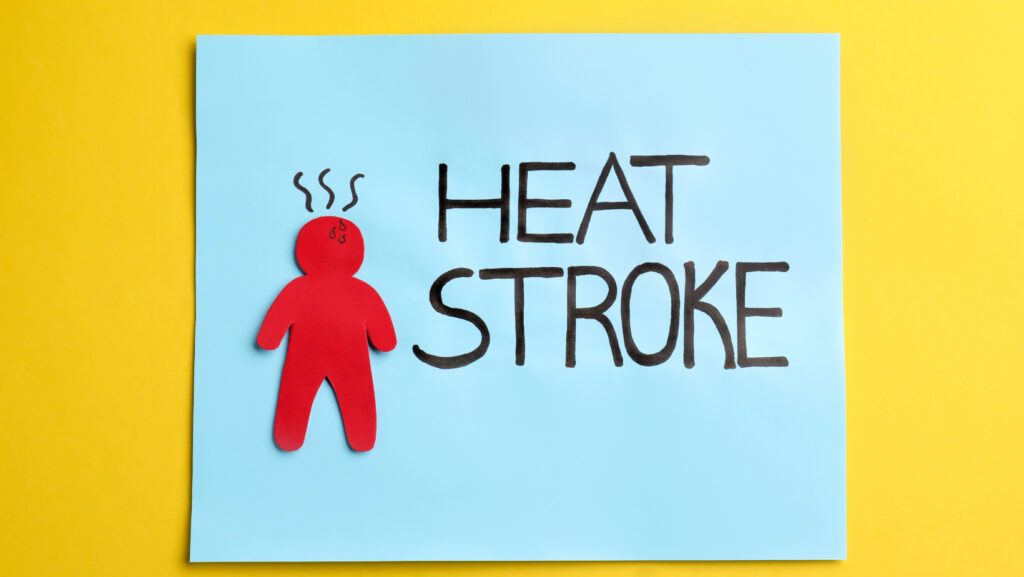As the temperatures soar and humidity rises during the hot summer months, children are at an increased risk of heat-related illnesses such as heatstroke and heat exhaustion. Factors such as high humidity levels and dehydration can hinder a child’s ability to regulate their body temperature effectively, making them more vulnerable to heatstroke.
Children may be unable to communicate their need for water as effectively as adults, putting them at higher risk. However, the good news is that heatstroke is preventable. In this article, we will explore the signs of heatstroke in children and provide essential information to help parents, caregivers, and educators to keep children safe in hot weather.
What is Heat Illness?
Heat illness refers to a range of conditions when the body’s heat-regulating system becomes overwhelmed in scorching weather, high humidity, or other similar situations. These conditions include heat cramps, heat exhaustion, and heatstroke. Heat exhaustion typically begins slowly, but if left untreated, it can progress to heatstroke, where a person’s body temperature reaches 105°F (40.5°C) or higher. Heatstroke requires immediate emergency medical attention, as it can be a severe condition. (Durani)
Common Signs of Heat Exhaustion and Heatstroke
Heat exhaustion can manifest through various signs and symptoms. The most common signs of heat exhaustion include:
- Heavy Sweating: The body tries to cool down by sweating excessively in response to the heat.
- Weakness and Fatigue: Heat exhaustion can cause weakness and lethargy, with the person feeling drained and exhausted.
- Pale, Clammy Skin: The skin may appear pale and feel calm and clammy to the touch as the body attempts to regulate its temperature.
- Fast, Weak Pulse: The heart rate may become rapid and weak as the body works to compensate for the increased demand caused by heat.
- Nausea and Vomiting: Heat exhaustion can cause stomach discomfort, nausea, and vomiting as the body tries to cope with the heat.
Also keep an eye out for the following signs and symptoms of heat stroke:
- Flushed, hot skin that is dry to the touch
- High body temperature of 105 degrees F or higher
- Fainting, seizures, severe headache
- Confusion or agitation
- Loss of consciousness
- Rapid breathing and heartbeat
- Weakness or dizziness
Awareness of these signs and taking swift action can help prevent the severe consequences of heat stroke and ensure the safety and well-being of children during hot weather conditions. (Down)
Treating Heat Illness
If your child shows signs of heat exhaustion, such as heavy sweating, weakness, dizziness, headache, nausea, or vomiting, acting quickly to prevent the condition from worsening into heat stroke is essential.
Here’s what parents should do:
- Get the child out of the sun and into a cool, shady place.
- Wet the skin with cool water or a damp cloth, or remove excess clothing.
- Offer cool water or a low-sugar sports drink to help replenish lost fluids and electrolytes.
- Monitor symptoms closely and seek medical attention if the condition worsens or fails to improve within 20-30 minutes despite treatment. (Hirsch)
Preventing Heat Illness
It is crucial to take preventive measures to avoid heat exhaustion in children. Some of them are:
- Seek Shade: Encourage toddlers to play in shaded areas outside in high temperatures. This can help prevent excessive heat exposure and related illnesses.
- Stay Hydrated: Ensure your child drinks fluids before and during outdoor activities and rehydrates afterward. This can help prevent dehydration, a common cause of heat-related illnesses.
- Wear Suitable Clothing: Ensure your child wears light and breathable clothing, particularly in hot weather. This can help regulate body temperature and prevent overheating.
Besides these measures, limiting your child’s exposure to heat is essential. Avoid covering car seats or strollers with towels or blankets, as it can decrease airflow and lead to quick overheating. Always double-check the back seat of your car, and never leave your child unattended in a vehicle, even for a short period. These additional tips can help prevent heat-related illnesses and keep your child safe and healthy in hot weather.
Heatstoke is a significant health concern, especially during hot weather conditions. It is vital to be aware of the signs and symptoms of heat exhaustion and heat stroke and take necessary preventive measures to avoid these conditions. Proper hydration, seeking shade, wearing lightweight and breathable clothing, and limiting exposure to the sun are effective ways to reduce the risk of heat-related illnesses. However, if the symptoms of heat exhaustion or heat stroke are experienced, it is crucial to seek medical attention immediately.
Works Cited
Down, Isa. “20 Signs of Heat Stroke and Heat Exhaustion in Kids.” Parents, Parents, 23 Nov. 2022,
www.parents.com/health/heat-exhaustion-heat-stroke-and-your-toddler-what-parents-need-to-know/.
“How to Handle Heat Illness (for Parents) – Nemours Kidshealth.” Edited by Yamini Durani, KidsHealth, The Nemours Foundation, Mar. 2023,
kidshealth.org/en/parents/heat-exhaustion-heatstroke-sheet.html.
“Heat Illness (for Parents) – Nemours Kidshealth.” Edited by Larissa Hirsch, KidsHealth, The Nemours Foundation, Aug. 2022,
 24x7 Available
24x7 Available

